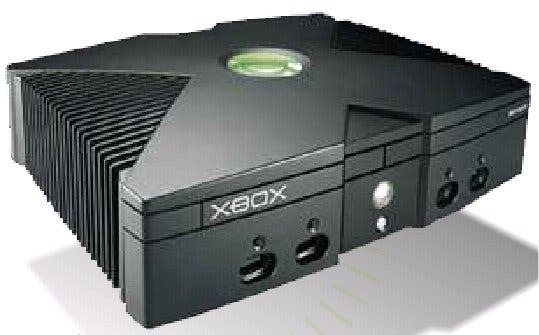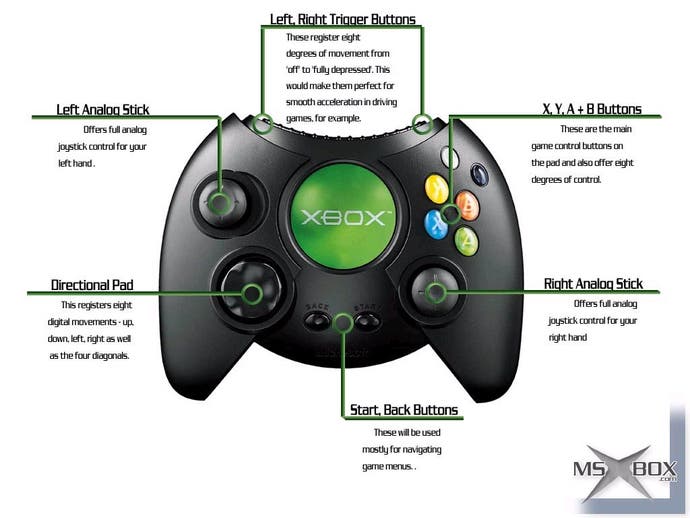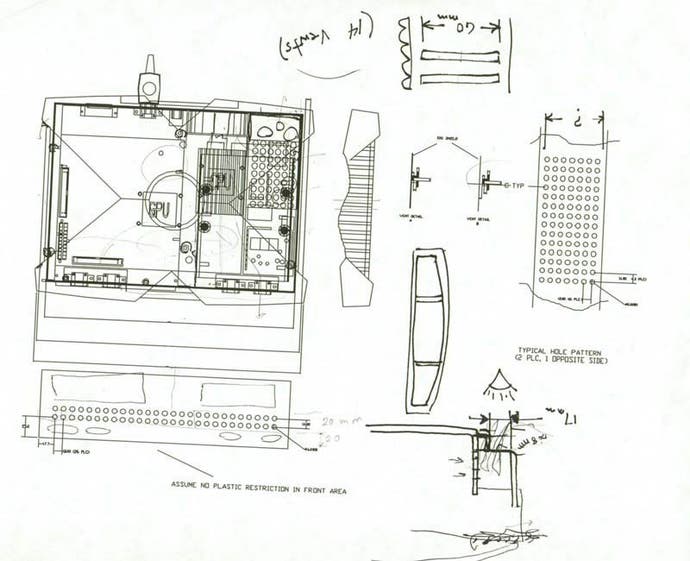Thinking About The Box
Article - with the Xbox finally unveiled, we take a look at just what the new console has to offer
1995: As the increasingly lucrative console market gears up for the next generation of hardware, a new pretender to the throne arises. Already a massive, powerful corporation in their own right, the entrance of this new competitor radically changes the face of the market, shaking the very foundations of the old guard.

2001: Sound familiar?
Part of the problem with the console industry is that it does tend to move in fairly concentric circles of development. The Xbox is basically a new-age PlayStation to Sega's Dreamcast, and Nintendo's GameCube is acting like a badly timed Nintendo 64, which will no doubt wow us with one or two eccentric Miyamoto platformers before slinking back into obscurity again. Thankfully though, Microsoft's learning curve is rather slight compared to Sony's from 1995. Seamus Blackley, the man at the head of it all, has a tight agenda for the development and roll out of the Xbox, and he is sticking to it, rigidly. The past week brought about an unofficial unveiling of the Xbox, courtesy of a leak at Ziff Davis' magazine Electronic Gaming Monthly, followed by an official release during a keynotes speech at CES from Bill Gates himself. The design of the Xbox is now confirmed, as you can see, as a nicely moulded set-top box with an X styling. The four ports along the front connect controllers, and the rear offers VGA, HDTV and other connectors, as well as the standard power inputs. Of most interest to most gamers will be the controller, which was also unveiled alongside the console. It shares little in common with Sony's PSX controller from 1995 you will be glad to hear, looking more like a Dreamcast controller than anything else, and apparently the product of many week's of hands-on research with young gamers from the Seattle area.

Tech
By now we are all fully aware of the Xbox' technical specifications (to refresh, they are just to the right of this text) but in the past week several facts have surfaced which help us to piece the Xbox puzzle together without having to guestimate the blank areas. For instance, the controllers. We had been told that Microsoft would use USB, but based on the hand-drawn blueprints which escaped from Redmond some months ago, and the leaked images last week, this seemed implausible - the connectors quite plaintively were not standard USB. The solution to this riddle is, quite frankly, genius. Microsoft obviously want people to buy their Xbox-specific peripherals. To this end, they need to find a way of using USB and avoiding compatibility with existing products. They could claim that driver issues will make their life difficult, but as the console is based on Windows 2000, rudimentary driver support for mice and gamepads (particularly Microsoft's Sidewinders) would be hard to get away without. To get round this, they have played on the need to reinforce the connection mechanism. Anyone who uses USB on their PC will recognize the flimsiness of the connector. Considering the heavy use most console controller ports see, altering the connector was deemed a good idea. The upshot of this? Microsoft can use a previously unseen connector and USB technology without having to worry about people plugging their USB Intellimice in and discovering that they don't work. Genius.

Controller Design
Aside from the USB connector, we know plenty of things about the controller now. We know that it shares common design mechanisms with the Dreamcast controller; it has top-loaded memory slots, two analogue and a standard thumb pad, as well as an array buttons on the right. It lacks shoulder buttons as far as can be seen, but includes trigger buttons on the top which can register eight degress of motion. The controller also sports a rather large green Xbox logo in the centre, a design element rather than a functional one, despite rumours amongst developers that it could be used to control mouse pointing on the console. Games rapidly plugging in and unplugging peripherals shouldn't be a problem either, as each device is expected to have a basic driverset included on ROM physically located on the controller. It will take a couple of seconds for the machine to orientate itself, but no longer than the delay on a Dreamcast or PlayStation 2. The most apparent difference between the Xbox and Dreamcast controllers is that the D-pad is a moulded Sidewinder-style apparition, and that there is a second analogue stick on the right. Few games are expected to use the D-pad in its original capacity, saving it for zooming and other non-movement functions. Another feature that the controller can lay claim to is a "rumble capability". Like Sony's Dual Shock, the Xbox controller will have rumble technology built in, hopefully producing something a little more impressive than the muted buzz of the DS2, or as Bill Gates put it, "letting you feel every explosion as it happens".
No Region Lockout
Perhaps one of the most overlooked aspects of the Xbox is that Microsoft has no plans to try and prevent imports by including region protection. As such, anybody in the United States could quite happily buy imported Japanese titles and vice versa without caring for adapters and the like. The only other console in recent years that has allowed people to do this is the Super Nintendo, but it lacked interoperability between PAL and NTSC regions. There is no word on how the Xbox will deal with this; whether Microsoft will simply produce games running at 60Hz regardless and force people over here to play them at slower speeds on 50Hz televisions, or whether they will compensate. It's also possible (and perhaps likely considering the HDTV support), that region lockouts have been reconsidered because of large amount of output formats. It seems unlikely that Microsoft would want to encourage people importing and exporting games to other territories, but they do seem rather passive to it all at the moment. However, it is more likely that the game developers themselves will include regional lockout code. If this is the case, it may mean that boot disks and other devices will be required as with the Dreamcast. At the moment though, it's hard to say.
Conclusion
The Xbox is now a very real speck on the horizon. We have seen the technology in action, and the design is now finalised. Development of titles like "Halo" from Oni-creators Bungie is now reaching a head, and some impressive footage of the likes of Oddworld and WWF is now surfacing. Microsoft have years of experience in developing and releasing killer products into the PC marketplace, and their thorough understanding of the technological arena will help them in their bid to overcome the likes of Nintendo and Sony. They have the right ideas, and soon it will be the time to see how they can present them.

